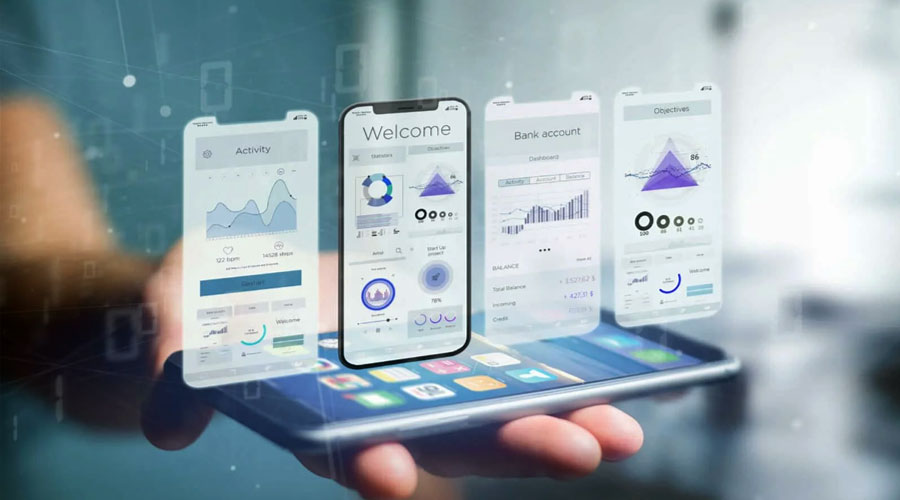
The success of every mobile application depends on a smooth and simple user experience (UX) in the rapidly evolving field of mobile technology. A seamless, frustration-free user experience is crucial whether you're creating an app design company or working as an app developer. An app with poor user experience can quickly lose users, which will harm your brand's reputation and business growth. However, an app that is well-designed and offers a great user experience (UX) can raise retention rates, increase customer loyalty, and ultimately contribute to commercial success. We'll look at useful advice and tactics in this blog post on how to make sure your mobile app offers a seamless user experience.
Giving the user interface (UI) careful consideration is the first step in guaranteeing a seamless user experience. Users interact with your app's user interface (UI). Users may become frustrated and give up if a user interface is cluttered and too complex, making navigating challenging.
Think about a shopping app design company.The interface should be easy to use, with big product photos, clear icons for the shopping cart, search and filters, and simple navigation that moves visitors from one step to the next (from browsing to checkout).
App users expect seamless operation and fast loading times. They will rapidly give up on your abandon. It crashes, freezes frequently, or loads slowly. Consequently, speed and performance optimization are important for a great user experience.
Instagram and other social networking apps prioritize speed. To keep users interested, they load new articles, photos, and videos as they scroll.
The first time consumers interact with your app is during the onboarding process. If your software is too long or too complicated, users can quit before they've had a chance to use it completely. A well-designed onboarding process should introduce users to important functionality without overloading them.
Thanks to a simplified onboarding process, users of the fitness software MyFitnessPal can rapidly create their profiles and learn to utilize the program's fundamental features, such as recording workouts and meal logs.
Navigation is the core of your software's user experience. If users can't easily find what they need, they will get irritated and even quit. Thanks to a well-designed navigation system, users can easily and with little effort navigate between areas of the app.
A news app's bottom menu might include tabs for home, categories, search, and profile to help users easily navigate between sections without confusion.
There should always be seamless user engagement and prompt, unambiguous feedback. There should always be tactile or visible confirmation that an action was accomplished, regardless of whether the user swipes, scrolls or touches a button.
When sending a message in a messaging app, consumers anticipate seeing an animation and a "sending" status to show that their message was successfully sent. This confirmation keeps users informed and gives them confidence that the action has been completed.
Mobile devices come in various screen sizes, and your app should be optimized to look good and function well on all of them. A responsive design ensures that your app adapts to different screen sizes, whether it's a small phone or a large tablet.
YouTube and other apps instantly adapt their layout to the device so that videos are seen properly on smartphones, tablets, and even smart TVs.
Accessibility is an important but frequently disregarded component of an app design company. If your software is accessible to all users, including those with disabilities, a broader audience can benefit from the improved user experience (UX).
People with visual disabilities can use apps like Be My Eyes and complete activities independently, thanks to voice detectors.
Mobile users commonly have concerns about their phone's battery life and data consumption. Apps that use a lot of data or battery may be swiftly removed, particularly if a replacement is available.
Spotify's offline music choices allow customers to enjoy music while on the road without using up their power, in addition to helping them conserve data.
There is more work to be done after your app goes live. Keep the user experience fluid, and regular upgrades are essential. After analyzing user comments, updates should be released to address bugs, enhance functionality, and add new features.
Based on user feedback, the well-known messaging software WhatsApp consistently releases updates that address issues, add new features and enhance performance.
Effective apps are built on a foundation of seamless user experiences. Focusing on responsiveness, speed, ease of use, and intuitive design will help you keep people interested and happy with your app. To provide a smooth experience over time, regular testing, optimization, and upgrades are also essential.
Users will love it. If you follow these best practices, users on your app if you follow to make your app stand in the crowded mobile app market. The objective is to make every contact as seamless and pleasurable as possible in order to encourage people to come back on time.
Copyright © 2025. Intersys Limited. All rights reserved.